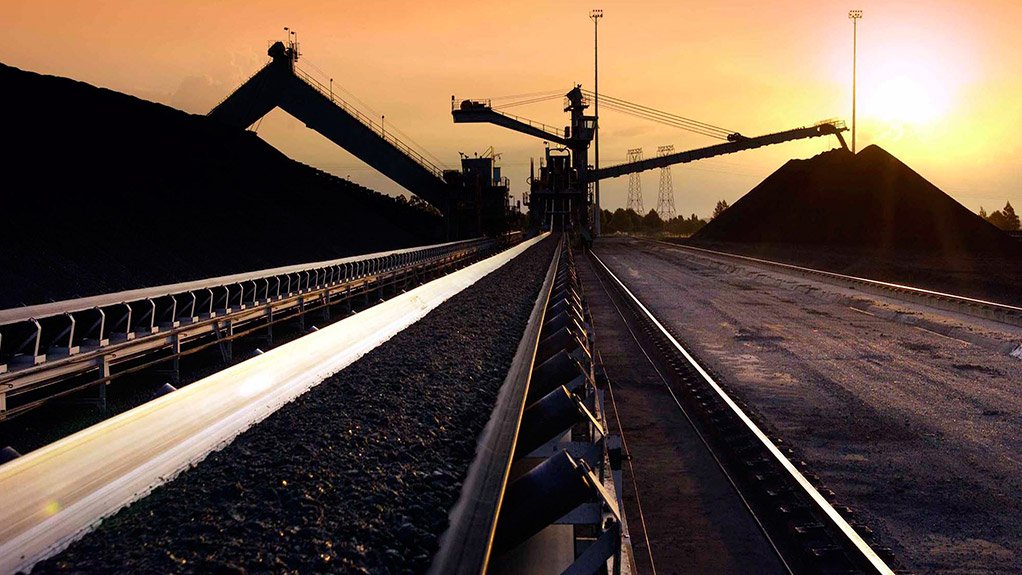No imminent increase in global coal prices expected




EUROPEAN DEMAND A marginal increase in coal exports from South Africa to the European market might become a reality
INDUSTRY STAGNATION Regulatory uncertainty, project delays, a lack of capital investment and a local production slowdown have caused a temporary stagnation in the growth of the local coal industry
XAVIER PREVOST South Africa wants and needs to increase coal supply for the local and export market
Photo by Duane Daws
Owing to the current depressed coal prices and lower international demand for coal, the global coal export market is facing one of its poorest periods in many years, says Pretoria-based coal consultancy XMP Consulting senior analyst Xavier Prévost, who tells Mining Weekly that he does not foresee any positive changes for the global industry this year or in 2015.
“While the global coal export industry did not achieve any impressive prices in the past two years, it also did not achieve incredibly low prices, with the four-and-a-half year lowest price at about $67.25/t,” he adds.
Prévost expects this price level to remain fairly static, at least for the next two years, with only marginal price fluctuations.
A significant change in coal prices is only expected in five years’ time or maybe later, as the drivers for better prices, such as demand, is currently very low, he says.
The current lack of demand is a result of China’s plans to increase its local coal use. There is also uncertainty about the country’s potential ban on low-grade coal imports, as it is regarded as a possible move away from using fossil fuels.
Prévost highlights that shale gas production, particularly in the US, has affected worldwide coal prices and markets. “The low coal prices are a result of a large amount of American coal flooding the market, owing to the supply of shale gas in the US market.”
Nevertheless, he reiterates his view that South Africa’s coal export industry has done well, with a record of more than 74-million tons of coal exported last year through the Richards Bay Coal Terminal, in KwaZulu-Natal. South Africa exported about 29% of the total coal produced in 2013, the majority of which was exported to the Asia-Pacific region and Europe.
“Three-quarters of coal exports headed for Asia last year, while the amount of coal sold to Europe in December was also larger than usual.” Prévost maintains that the local coal industry may be exporting more to Europe in future.
South Africa was the biggest coal exporter to Europe from 2004 to 2009, exporting from 56% to 87% of produced coal to the continent. However, owing to a lack of rail capacity, South Africa’s coal production and export rate slowed, enabling other competitors, like Colombia, to take advantage of the situation.
Nevertheless, Prévost believes that South Africa may still increase coal exports to Europe from the current figure of about 30-million tons a year to about 40-million or 50-million tons a year in five to ten years, depending on European demand and export prices.
“South Africa can again become the third-largest exporter of coal, provided that the country starts operating enough mines and that port and rail capacity increases. South Africa has enough resources . . . to increase exports from 70-million tons a year to 90-million or 100-million tons a year in the next ten years, he says.
Local Market Prospects
According to the Energy Information Administration, bituminous coal production accounted for 99% of the nation’s total coal production in 2013, with 47% of the bituminous coal used to generate electricity.
Prévost believes the local, or inland, coal market will remain unchanged in the near future, “having neither lost any ground, nor gained new ground”, owing to uncertainties regarding government legislation, project delays, lack of capital investment and local production decreases.
He highlights that regulatory uncertainty caused by the Mineral and Petroleum Resources Development Act Amendment Bill is further compounding current investor concerns about the local coal industry. He explains that, if the Bill is promulgated, coal could be declared a strategic resource and, if the proposed carbon tax were implemented, it would impact negatively on energy prices. For example, electricity would become much more expensive.
If coal is declared a strategic resource, government could restrict or control coal exports, which could negatively affect not only the economic viability of coal mines but also their opportunities for revenue and profits, Prévost reiterates.
He also notes that the Renewable Energy Independent Power Producer Procurement Programme may force a decrease in thermal coal demand.
Moreover, Prévost highlights that revisions to South Africa’s envisaged Integrated Energy Plan and Integrated Resource Plan (IRP), which outline the country’s energy mix to 2030, could also impact negatively on the industry if government decides to reduce coal use for power generation by up to 60%.
“South Africa is facing a situation where the country wants and needs to increase coal supply for the local and export market, if provided with sufficient economic justification. However, the energy legislation – if implemented – will weaken this justification and, therefore, the economic impetus to access more coal reserves and create new coal mines.”
Prévost highlights the increasing demand for thermal coal from the local market, as outlined in the IRP Green Shoots Scenario, which estimates that Eskom will require 4.5-billion tons of coal by 2040, of which 2.5-billion tons is still unsecured. Further, there is currently a lack of increased production and supply of this coal to the local market.
Prévost, therefore, predicts that local coal prices may increase as soon as Eskom demand increases, with the completion of the new power stations from 2017 to 2020, though not dramatically. He believes it is possible for the local coal price to reach parity with the export price.
Comments
Press Office
Announcements
What's On
Subscribe to improve your user experience...
Option 1 (equivalent of R125 a month):
Receive a weekly copy of Creamer Media's Engineering News & Mining Weekly magazine
(print copy for those in South Africa and e-magazine for those outside of South Africa)
Receive daily email newsletters
Access to full search results
Access archive of magazine back copies
Access to Projects in Progress
Access to ONE Research Report of your choice in PDF format
Option 2 (equivalent of R375 a month):
All benefits from Option 1
PLUS
Access to Creamer Media's Research Channel Africa for ALL Research Reports, in PDF format, on various industrial and mining sectors
including Electricity; Water; Energy Transition; Hydrogen; Roads, Rail and Ports; Coal; Gold; Platinum; Battery Metals; etc.
Already a subscriber?
Forgotten your password?
Receive weekly copy of Creamer Media's Engineering News & Mining Weekly magazine (print copy for those in South Africa and e-magazine for those outside of South Africa)
➕
Recieve daily email newsletters
➕
Access to full search results
➕
Access archive of magazine back copies
➕
Access to Projects in Progress
➕
Access to ONE Research Report of your choice in PDF format
RESEARCH CHANNEL AFRICA
R4500 (equivalent of R375 a month)
SUBSCRIBEAll benefits from Option 1
➕
Access to Creamer Media's Research Channel Africa for ALL Research Reports on various industrial and mining sectors, in PDF format, including on:
Electricity
➕
Water
➕
Energy Transition
➕
Hydrogen
➕
Roads, Rail and Ports
➕
Coal
➕
Gold
➕
Platinum
➕
Battery Metals
➕
etc.
Receive all benefits from Option 1 or Option 2 delivered to numerous people at your company
➕
Multiple User names and Passwords for simultaneous log-ins
➕
Intranet integration access to all in your organisation




















